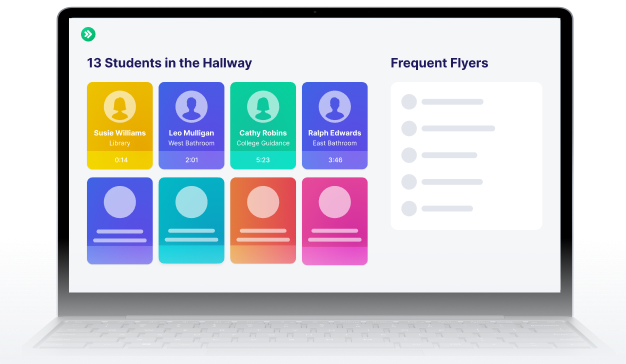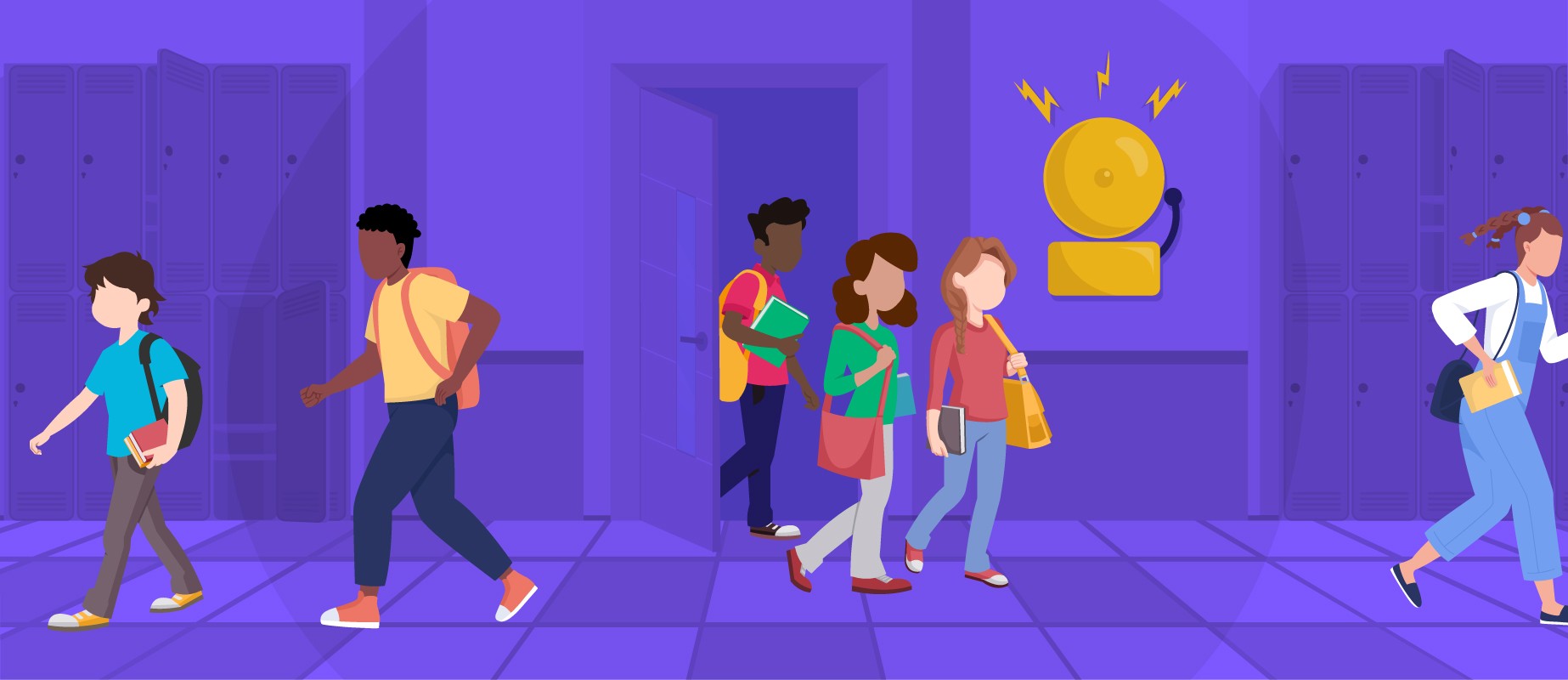In the News: Enhancing Safety in Schools Across Minnesota
Read the Story
SmartPass Co-Founders Listed on Forbes 30 Under 30
Read the Story

Lee Moskowitz
.avif)

What can schools do about the wave of student absenteeism? It’s a long-standing concern that’s showing up at higher levels and in new ways, which means the typical approaches need a rethink. Chronic absenteeism, where a student misses 10% or more of the school days in a year, carries a big risk after even a short time. It impacts current and future learning and academic performance, including graduation.
The rates of chronic absenteeism have jumped in the last few years, almost doubling from before COVID-19 to the 2021-2022 school year. School districts and departments of education are scrambling to shift the trend and bring kids back to class.
The biggest challenge is no single answer or solution will fix this. It can be easy to default to “kids these days” or say that people just don’t value education anymore. But students miss school because the current rigid schedule and setting don’t fit them right then, whether by choice or circumstance. Getting to the root of why that is for each student is where the solutions lie.
Finding the right balance between proactive and reactive interventions, positive and negative consequences, and community and individual approaches is not a simple process. Each school and student needs a unique combination.
Attendance Works, a non-profit addressing chronic absence in schools, suggests there are four main categories of causes for chronic absences: Barriers to attendance, disengagement from school, aversion to school, and misconceptions about the impact of absences.
Examples of root causes for each category:
When students face obstacles to attendance:
When students aren’t engaged in their learning:
When students dislike being in school:
When students are missing key attendance information:
Often, school staff will not know something is wrong until they start to see patterns of absences or changed grades or behavior. While that reinforces the value of great data and communication as a staff, it also shows how important it is to proactively build trusting relationships with students and their families. Anytime a student can bring a difficulty to a teacher or other adult before the negative impacts pile up, it makes a big difference.
Overall learning environment and school culture carries a big impact, too. Good communication about school expectations, special circumstances, and current absence trends has been shown to preemptively boost attendance numbers.
The short-term impacts of chronic student absenteeism may be behavior difficulties, frustration at the learning process, higher risk for mental health difficulties, lowered grades, or missing time at extracurricular activities they love to work to catch up again. In fact, the US Department of Education has urged schools to address the rising absenteeism numbers, sharing that it could account for 27% of math test score decreases and 45% of reading test score decreases.
The ties between engaged students and their attendance levels can be circular for schools, too. When students miss school at higher rates, class time is less engaging as teachers are spending time handling admin and filling in missed instruction. And as students become less engaged, they’re more likely to miss school.
Missed instruction time causes a disruption for the students who are absent, as foundational skills may be missed, application time is decreased, and reviews may fall by the wayside. Relationships with their teachers and peers may be more difficult to maintain, as well.
Long-term, high rates of absenteeism tend to lead to
That’s a heavy list. So what’s the answer?
Attendance Works focuses on the importance of seeing the broader life picture with student absenteeism and creating a positive learning environment through student and adult well-being and emotional competence, physical and emotional health and safety, academic challenge and engagement, and belonging, connection, and support.
Essentially, it boils down to community building, individualized strategies, and building meaningful relationships. This is presented as a three-tiered intervention framework for schools, built on key Foundational Strategies.
Foundational Strategies - These are school-wide strategies that build positive learning conditions to engage students more effectively, which lowers the risk of absences.
Tier 1 (Universal Prevention) - Broad interventions that encourage better attendance for all students and prevents chronic absenteeism from becoming an issue.
Tier 2 (Early Intervention) - Individualized assessment and interventions to remove barriers to attendance when chronic absenteeism becomes a concern for a student.
Tier 3 (Intensive Intervention) - Specialized strategies for students missing the most school, often 20% or more days. This will usually involve supports and agencies outside of the school team and may include case management.
The resources on Attendance Works can be a great place for schools to start rethinking their approach to interventions, where they have examples of interventions for each tier, a worksheet to use in making individualized plans, and more.
Past the community-wide preventative measures and nudges, once a student shows a pattern of chronic absence there needs to be an individualized approach. The desired outcomes should be based on school policies and the student’s goals. The root causes need to be identified through a combination of good data and genuine conversations and should include a team of family, staff, administrators, counselors, and community members, depending on what’s appropriate for that student’s situation. Early detection is incredibly important and good communication and data collection can help.
Following that process, interventions for chronic absenteeism can be planned. They should be restorative, consistent, traceable, and flexible. Because chronic absenteeism is widespread and teachers are already stretched so thin, digital tools and community resources should be tapped as much as possible.
Let’s look at some hypothetical examples of an individualized root cause assessment and intervention plan for students facing chronic absenteeism.
The Fading Freshman
A new freshman with few past school issues is falling behind and missing more class time at school. The decreased grades seemed to start before the attendance issues.
The student shares they were hit hard by the increase in responsibilities and difficulty of work when they got to high school. The team decides the student is likely facing “ninth grade shock” and it’s become increasingly overwhelming.
The student says they weren’t sure who to talk to and they were worried it would disappoint the adults in their life.
The Plan
The Home Health Crisis
A student’s family member was recently diagnosed with serious health issues and the student has become withdrawn. They are distracted in class, homework is missing, and they’re avoiding social settings. As time goes on, they are absent more and more full school days, too.
The student shares they got a new job to help with family financial stress, as their parent has been too sick to work much. The exhaustion from work is a big reason they’re tardy in the mornings. Some days, food insecurity at home has them so hungry they’re distracted in class. Finally, the student is worried about social settings where they may take infections home to their loved one, who is now at risk.
The Plan
The root causes will fall into the four categories, but the situations will always look and feel different to each student. Maybe a student is skipping school to avoid a bullying situation and a no-contact agreement and reliable enforcement would give them the feeling of safety they lost. Maybe a student has been on a college-prep course load and has mentally checked out because they realized the year before that they had an incredible talent in fixing cars and wanted to go into mechanics after high school.
Even students that have been disengaged for years and resisted intervention plans in the past need to have genuine connection and empathetic inquiry into what they’re facing in their days, so that there is a chance for incremental improvement. So many students’ progress shifts unexpectedly when the right turning point is found, even if it is hard to predict.
In all situations, the team should remember that student accountability is increased when they are included in setting the expectations from the beginning, so it’s important to complete attendance assessments and create plans with their input each step of the way.
Attendance Works’ helpful Root Cause Worksheet is a tool any team can pair with their own policies and procedures to guide the conversation.
We can’t forget that the advent of COVID-19 added a whole new layer to the needs, barriers, and necessary solutions in the work of school attendance. Students carry more anxiety. Their families may have long-term impacts of grief or loss and their support system may have taken a hit. They may have Long-Covid that isn’t showing signs of letting up.
As a whole, students also faced learning and social development gaps from lockdowns and other disruptions. While school communities have worked hard to fill those, the gaps still exist for the most part. In some states, they’ve even increased.
Another aspect that can compound these issues is when schools face higher illness in the community, whether it’s COVID or other germs that are going around. When students or families are ill, schools can work to lessen the impact of missed days that simply can’t be avoided at that point through digital tools, flexible or hybrid schedules, and information on rest and recovery.
Data to inform decisions and manage student movement and accountability throughout the day is invaluable. Digital hall passes, like SmartPass, gather data to show which classes students may be missing, when they need flexible options, or whether they’re facing behavioral or social challenges in the hallways or common areas during class time. Accurate analysis of that data paired with good communication allows school teachers and staff to make early diagnosis of increased risk for students and chronic absenteeism.
Pairing that knowledge with intervention strategies can decrease the risk of continued absences or negative impacts on students’ learning outcomes. Students are able to see patterns of their behavior, understand school policies and expectations, and cooperatively create flexible arrangements for time out of the classroom or additional support. The student and their whole support team can easily keep up with progress and communication in one place. It’s individualized structure without the time-consuming nature of paper or manual systems.
Student absenteeism is a foundational issue for student learning, school culture, staff overwhelm, community relationships, and so much more. While it is happening across a broader swatch of each school’s student body, the need for genuine, empathic, and student-centered approach is still the most effective path.
Taking a holistic strategy to better attendance results means investigating and outlining root causes and pairing them with tested and individualized interventions in each student’s plan. The good news is that more research, shared case studies, helpful digital tools like SmartPass, and community support and engagement can support raised student attendance and accountability and help students get the best results out of their school years.
If you’d like more information about how SmartPass’s products and features can help address your school’s needs for student learning support, classroom movement management, and community engagement, get in touch!



